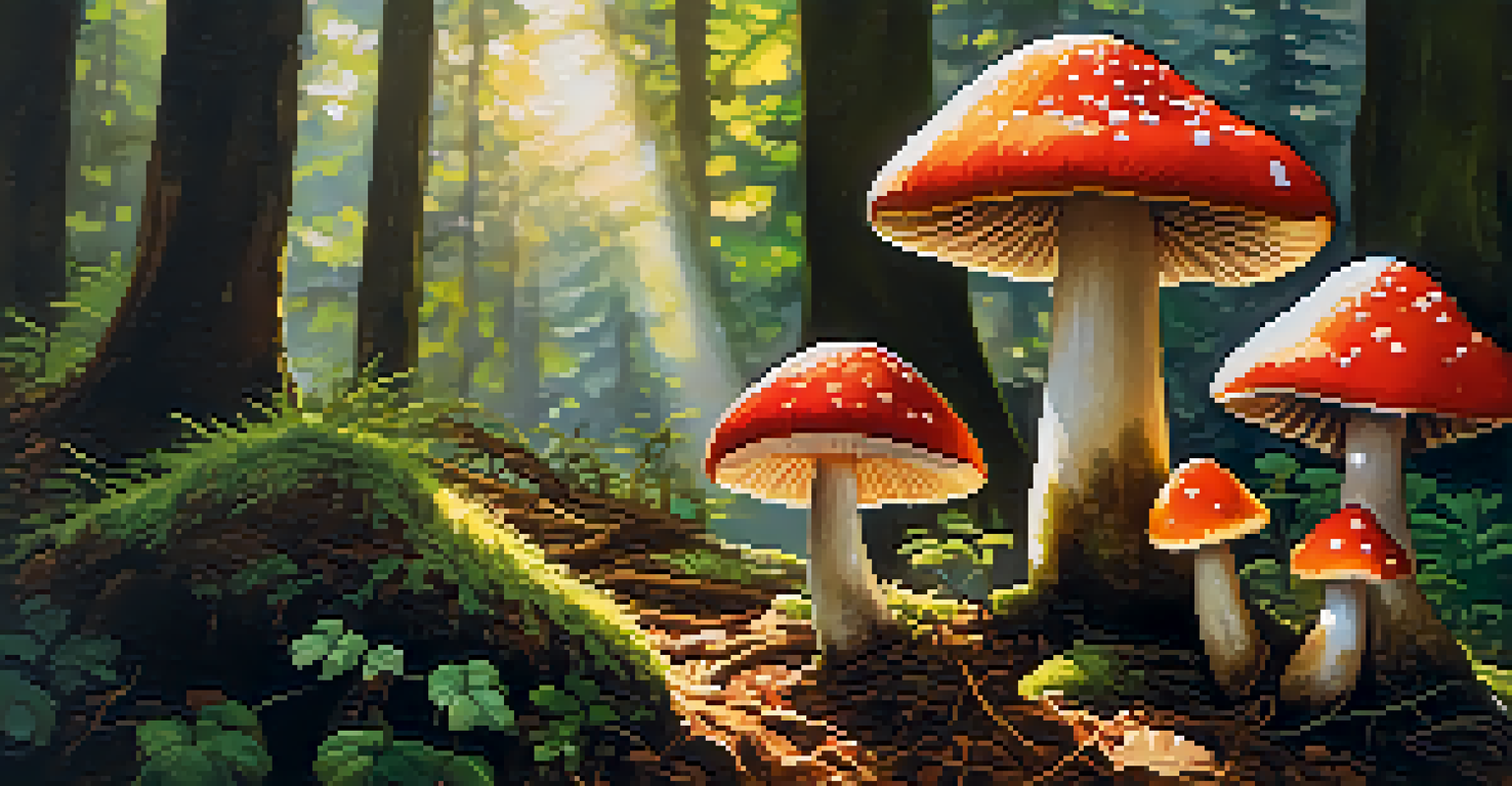Understanding Microdosing: Benefits, Risks, and Protocols

What is Microdosing? A Brief Overview
Microdosing refers to the practice of consuming very small, sub-perceptual doses of psychedelic substances, typically around 1/10th to 1/20th of a standard dose. This approach aims to harness the potential benefits of psychedelics without experiencing the intense effects associated with higher doses. Common substances used for microdosing include LSD and psilocybin (the active compound in magic mushrooms).
Psychedelics can help you experience the world in a new way, but it's essential to approach them with caution and respect.
The concept has gained popularity, particularly in the tech and creative industries, where individuals seek to enhance their cognitive abilities and creativity. Microdosing is often described as a way to improve mood, increase focus, and foster a greater sense of well-being. However, it’s essential to differentiate microdosing from recreational use, as the intention and dosage are significantly lower.
Understanding microdosing involves recognizing both its historical context and contemporary application. While it has ancient roots in various cultures, modern interest has surged in recent years, leading to a growing body of research that investigates its effects and potential therapeutic benefits.
Benefits of Microdosing: What to Expect
Many proponents of microdosing report a range of benefits, including improved mood, enhanced creativity, and increased focus. These outcomes can be particularly appealing for those looking to boost their productivity or tap into new sources of inspiration. Some individuals claim that microdosing helps them feel more connected to their surroundings and more engaged in their daily tasks.

Additionally, users often note a reduction in anxiety and depression symptoms, suggesting that microdosing may have potential therapeutic effects for mental health. While the scientific community is still exploring these claims, preliminary studies indicate that psychedelics might play a role in promoting neuroplasticity, which is the brain's ability to adapt and change.
Understanding Microdosing Basics
Microdosing involves taking small doses of psychedelics to enhance mood and creativity without intense effects.
It's important to remember that experiences can vary widely from person to person. What works for one individual may not yield the same results for another, making it crucial to approach microdosing with an open mind and a willingness to experiment responsibly.
The Risks Involved in Microdosing
While microdosing may offer several benefits, it’s essential to be aware of the potential risks involved. For starters, legal issues surrounding the use of psychedelics can pose significant challenges, as many substances remain illegal in various jurisdictions. This legal ambiguity can lead to uncertain consequences for users.
The mind is not a vessel to be filled, but a fire to be kindled.
Moreover, individuals may experience undesirable side effects, such as increased anxiety or discomfort, even at low doses. The lack of standardization in dosing and the variable purity of substances can further complicate matters, making it vital for individuals to remain cautious and informed.
Lastly, microdosing should not be seen as a replacement for professional mental health treatment. While some users may find relief from symptoms, it's crucial to consult with a healthcare professional for any significant mental health concerns.
Microdosing Protocols: How to Get Started
If you're considering microdosing, establishing a clear protocol is essential for a safe and effective experience. A common approach is to follow a schedule, such as dosing every three days, allowing your body to adapt to the substance while monitoring its effects. This way, you can assess how microdosing impacts your mood, focus, and creativity over time.
It's also important to maintain a journal to track your experiences, noting any changes in your mental state, productivity, or emotional well-being. This reflective practice can help you identify patterns and determine what works best for you. Additionally, starting with a lower dose and gradually adjusting it can help in finding the right balance.
Potential Benefits and Risks
While microdosing may boost focus and reduce anxiety, it carries legal and health risks that users must consider.
Remember, everyone's body chemistry is different, so what works for one person might not work for another. Listening to your body and being patient with the process is key to finding a suitable microdosing routine.
The Science Behind Microdosing: What Research Says
Scientific research on microdosing is still in its infancy, but initial studies have provided insightful glimpses into its potential effects. Some research indicates that microdosing may enhance cognitive function and emotional well-being, but results can be inconsistent. This highlights the need for further investigation to better understand the underlying mechanisms at play.
One of the most notable studies conducted by researchers at the University of Toronto found that participants reported greater emotional resilience and improved problem-solving abilities after microdosing. However, these findings are primarily anecdotal, and larger, controlled studies are needed to confirm these results.
As interest in microdosing grows, scientists are increasingly exploring its potential applications in mental health treatment. Future research may help illuminate the nuances of microdosing and its long-term effects, which could pave the way for new therapeutic options.
Microdosing Communities: Sharing Experiences
As the microdosing trend has gained traction, various online communities have emerged where individuals share their experiences and insights. These platforms provide a space for users to exchange tips, discuss protocols, and offer support to one another. Engaging with these communities can be a valuable resource for those considering microdosing or seeking to refine their approach.
Moreover, these groups often emphasize harm reduction and responsible use, encouraging members to prioritize safety and well-being. By fostering open dialogue, individuals can learn from one another and develop a deeper understanding of their experiences with psychedelics.
Importance of Protocol and Community
Establishing a clear microdosing protocol and engaging with supportive communities can enhance the experience and safety.
However, it’s essential to approach online advice with caution, as not all information may be accurate or credible. Always consider the source and seek guidance from reputable resources or professionals when navigating the world of microdosing.
Conclusion: Is Microdosing Right for You?
Ultimately, the decision to try microdosing is a personal one that requires careful consideration of the potential benefits and risks involved. While many individuals report positive experiences, it’s essential to remember that everyone’s journey with psychedelics is unique. Taking the time to research, reflect, and consult with professionals can help you make informed choices.
If you decide to embark on a microdosing journey, starting with a clear protocol and maintaining a journal can enhance your experience. As you explore this fascinating practice, remain open to the insights and lessons that arise along the way.

In conclusion, microdosing presents an intriguing avenue for personal growth and self-discovery. By approaching it with mindfulness and caution, you may uncover new dimensions of creativity and well-being in your life.